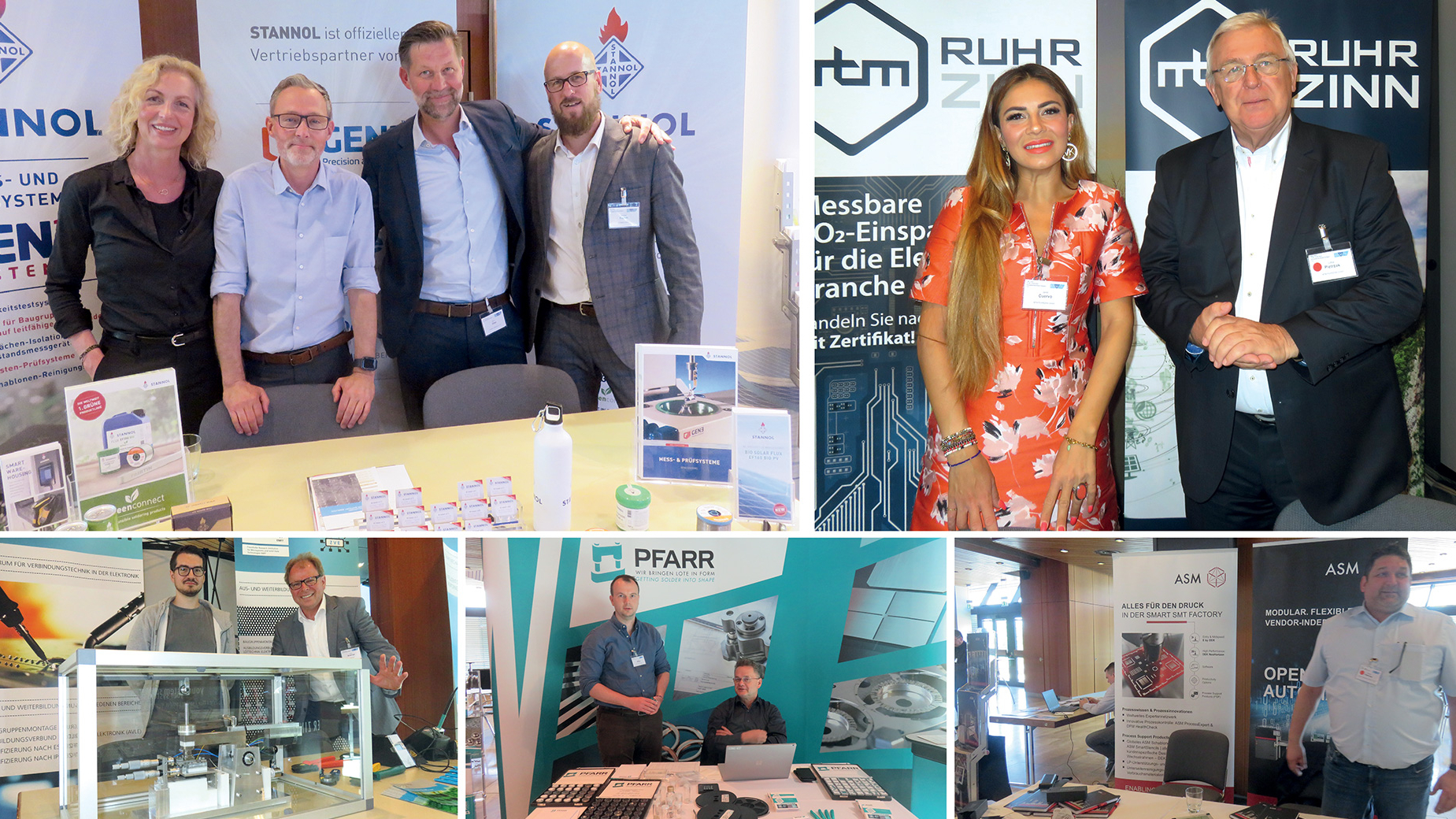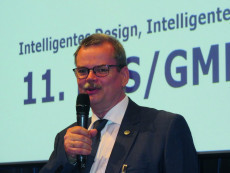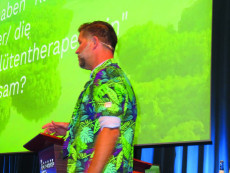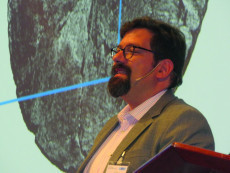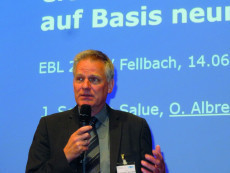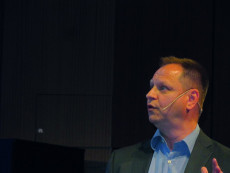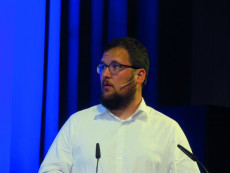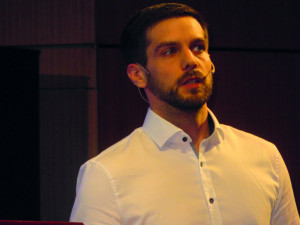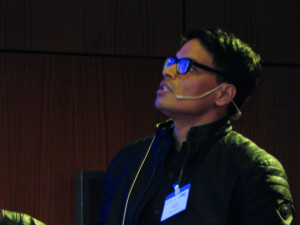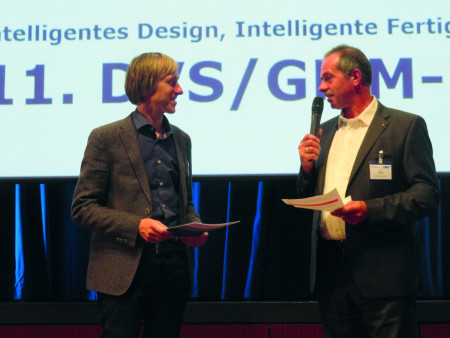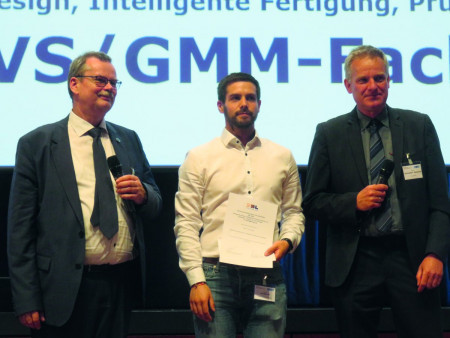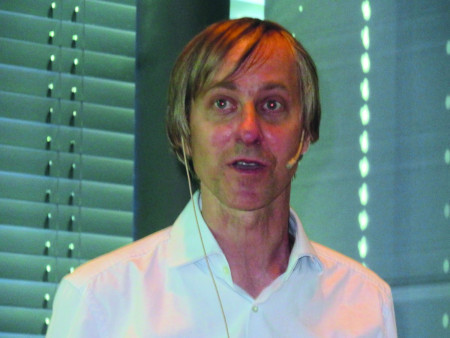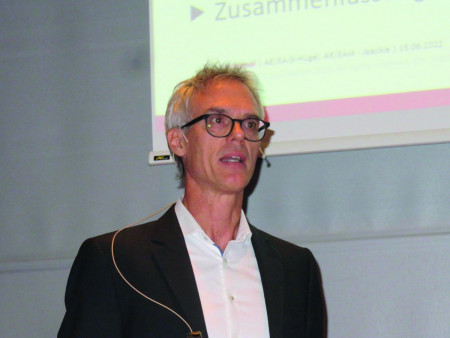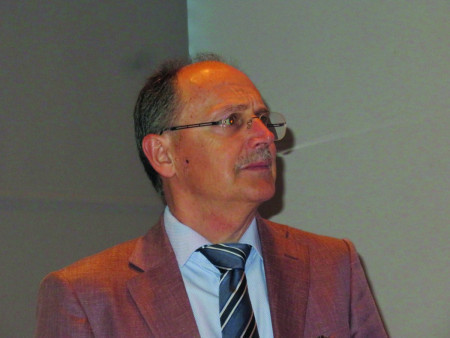How intelligent design and production, including test strategies and the development of associated applications, can be realized was intensively discussed by around 150 participants at the EBL 2022 conference on electronic assemblies and printed circuit boards in Fellbach.
At the 11th joint event of the DVS (German Welding Society) and the GMM (VDE/VDI Society for Microelectronics, Microsystems and Precision Engineering), 2 keynote speeches and 49 specialist presentations as well as a tabletop exhibition were offered on the above-mentioned range of topics. In addition, the welcome evening offered plenty of opportunities for networking, which is even more important after the pandemic.
Bernd Enser, Chairman of the Program Commission, and Prof. Dr. Mathias Nowottnick, Scientific Conference Chair, opened EBL 2022. In his statement, Nowottnick noted that although there are currently many problems, there is still reason for optimism: the world is also making a lot of progress, including, for example, the significant decline in child mortality. In this context, he emphasized that risks must be assessed on the basis of facts and that data changes over time, as he illustrated using the example of nuclear power plants. This is why more and more data and AI (artificial intelligence) are needed to analyze them, even in complex contexts. The basis for the latter is the enormous computer capacities that are now available. Information processing between humans and computers must be harmonized in order to optimize the efficient and sustainable production of innovative and reliable products. It is essential that users and users understand the system, recognize opportunities - but also get to know the possibilities for concrete implementation. This conference aims to contribute to this.
Keynotes: Sustainability at SMEs and the development of robotics
Sustainability is becoming increasingly important and demanded by business partners. This raises the question: 'How do SMEs survive in the jungle of sustainability requirements?' Using practical examples, Marco Dörr and Susanne Schlüter, both from Stannol, Velbert, demonstrated how this can be achieved successfully and gave some tips. Using the example of climate neutrality, they made it clear that sustainability is a complex challenge that requires a great deal of effort. This is because stakeholder interests have to be taken into account.
Customers want data transparency, delivery capability and security, owners want long-term profitability and competitive advantages, procurement wants no additional work and those responsible for finance want low costs and a high ROI. Many customers ask for a lot of details, as the questionnaire presented as an example by an OEM shows. In addition, different databases provide different values, e.g. for the emission factors of a material. SMEs cannot produce extensive and comprehensive sustainability reports like large companies. This is because they lack the resources and expertise to do so.
Nevertheless, there are possible solutions: First, it makes sense to collect the relevant information. It is then advisable to build up a network. Based on this, the first balance sheet can be tackled. A sustainable approach to the environment has always been important to Stannol. As early as 2013, the company developed a product line consisting of fairly traded and ecologically sustainable raw materials as part of its Ökoprofit certification. Sustainability includes the selection of suitable suppliers and the responsible use of resources and raw materials.
This begins with the efficient use of energy and raw materials and continues with various other measures through to waste minimization. Stannol's environmental management complies with ISO 14001, whereby theCO2 footprint is used to measure and evaluate the company's own environmental performance. This is done annually using standardized and internationally recognized methods and conversion factors. The ecocockpit tool developed by the Effizienz-Agentur NRW is used for this purpose. It is a web-based, free tool for determining thecarbon footprint that provides the necessary data on product, process and site-related greenhouse gas emissions.
Compared to 2019, Stannol was able to save around 60% of emissions through targeted measures. The remaining emissions were offset by a climate protection contribution. This went to the non-profit organization atmosfair, which uses it to support climate protection projects in Nigeria, India and Kenya. Stannol has been climate-neutral at all Scope 1 and 2 locations since 2020. The work involved in this carbon footprint assessment amounted to zero consultancy fees and only around 80 working hours. It took about a year to achieve the first balance sheet. The results speak for themselves - it's not greenwashing. Marco Dörr and Susanne Schlüter appealed to everyone to get started. There is no need to be afraid of it, because 70 to 80% - essentials - is enough at the beginning and the learning curve and momentum will be great.
The question: 'Smart robotics - foreseeable disruption or vague phantasm?' was answered by Prof. Dominik Bösl, University of Applied Sciences of the Bavarian Economy, Munich, starting with a list of past predictions, all of which later proved to be wrong. The future, he concluded, cannot be predicted and disruptions cannot be planned. This also applies to robotics.
However, thanks to modern scientific methods such as (mega) trend analysis, it is possible to estimate and extrapolate what will happen in the coming decades. Bösl named a number of megatrends, including diversity, climate change, scarcity of resources, urbanization, safety, sustainability, digitalization, globalization, industrialization, the knowledge society and demographic change.
Robotics, automation and AI will change the world. Robot development will take place in four stages towards the smart robot. "Our grandchildren will be the first generation of robotic natives, while we are still robotic immigrants with an analog background." The latter will nevertheless experience disruption, starting with digitalization, and then the automation of the world. However, to ensure that this brings benefits rather than disadvantages for everyone, robotic governance is needed to regulate robotics, automation and AI.
Contributions to the EBL Prize for Young Scientists
Moderated by Prof. Dr. Mathias Nowottnick and Prof. Dr. Martin Schneider-Ramelow, Fraunhofer IZM, Berlin, the following contributions submitted for the EBL Prize were presented as short talks:
- Automatic detection and classification of electronic components in X-ray images based on neural networks by Oliver Albrecht, TU Dresden
- Implementation of an FE2 multiscale simulation to analyze thermomechanical stresses in printed circuit boards by Andreas Stegmaier, Fraunhofer IZM, Berlin
- Technology development for the targeted manipulation of electronic components with regard to defined structural defects by Victoria Constance Köst, TU Dresden
- High current carrying capacity of a multilayer ceramic (LTCC) for use in power electronic applications by Lukas Wolz, Robert Bosch GmbH, Reutlingen
- Flexible sensor electronics for conditional monitoring of timing belts by Dominik Grosskurth, TU Darmstadt
- Thermal impedance evaluation of optimized PCB-based GaN HEMT Single-Chip-Prepackage using VGS Method by Milkias Ghebreslassie, Kempten University of Applied Sciences
- Development of a 12V/48V bidirectional DC/DC converter for mild-hybrid applications using PCB embedded MOSFET half-bridge prepackages by Keshar Rawal, Kempten University of Applied Sciences
As can easily be seen, the variety of topics covered in these presentations was great, as was the quality of the contributions. Both apply to all the contributions to EBL 2022.
Double award ceremony and parallel sessions on key topics
Two prizes were awarded at EBL 2022:
- The 'Best paper EBL 2022' prize went to Andrej Novikov, University of Rostock, for his paper 'High temperature stable solder joints by the application of composite solder materials'.
- The 'EBL Prize for Young Scientists 2022' was awarded to Dominik Grosskurth, TU Darmstadt, for his contribution 'Flexible sensor electronics for conditional monitoring of timing belts'.
After the award ceremony, all other presentations were offered in three parallel sessions with different thematic focuses. Below is a brief summary of the award-winning papers and some examples of the others.
Andrej Novikov, University of Rostock, reported on investigations into the realization of high-temperature-stable brazed joints through the use of composite brazing materials. Diffusion soldering can be used to specifically increase the re-melting temperature so that the operating temperature of the finished soldered joint can exceed the joining process temperatures. Composite brazing materials can be used to produce brazed joints that can withstand high thermomechanical stresses. Andrej Novikov investigated the composite brazing material made of the eutectic brazing alloy BiSnAg with a melting temperature of 139°C and added copper particles, focusing on the influence of heat input during the brazing process and subsequent thermal aging on the microstructure of the brazed joints. Increased heat input during prolonged soldering processes with an increased peak temperature and ageing at 150°C for up to 30 minutes did not lead to any significant coarsening of the microstructure. Higher temperature loads are necessary for this. During thermal aging at 175°C and up to 168h, several bi-crystals with dimensions of approx. 50µm x 70μm were observed in the solder microstructure. Furthermore, several local bridging of the solder gap with the higher melting Cu6Sn5 phase was observed. The mechanical strength of the brazed joints was investigated using shear force measurements. The higher thermal load during the brazing process and the ageing at 150°C did not lead to a significant reduction in strength.
Dominik Grosskurth, TU Darmstadt, described flexible sensor electronics for monitoring the condition of timing belts. Timing belts are often replaced at an early stage in order to avoid failures. By installing a sensor, the condition of the timing belt can be monitored so that maintenance and replacement intervals can be optimized and costs can be saved. To this end, sensor electronics have been developed that measure important values such as acceleration and temperature inside a timing belt and transmit them wirelessly to a receiver unit. The sensor electronics are also supplied with power wirelessly. This makes it possible to monitor the timing belt and the entire drive during operation. The design of the sensor electronics and the associated challenges, such as the size restriction due to the space available in a tooth (width only 3 mm) and the measurements taken as a result, were described.
Karsten Schischke, Fraunhofer IZM, Berlin, provided information on the challenge of climate neutrality: options for action for component and PCB production and illustrated these with practical examples. Options for action with regard to one's own energy consumption can be adjustments in product design and technology selection. The selection and requirements of suppliers are also important. Depending on the position in the supply chain and the type of own manufacturing processes (complexity, thermal processes, special manufacturing environment), the contributions of greenhouse gas emissions in Scope 1, 2 and 3 vary in relevance. The priorities for climate neutrality measures must be defined accordingly. If the focus of greenhouse gas emissions is in Scope 3, comprehensive cooperation with the company's own supply chain is required with regard to process changes, material and component selection, energy procurement from suppliers and similar. If the contributions in Scope 2 predominate, the company's own energy-saving measures and the switch to renewable energies have priority.
The AgSn20 process launched by Dow in 2014 is now available worldwide, i.e. in series production in several electroplating plants in Europe and Asia. Dr. Philippe Jäckle, Robert Bosch GmbH, Schwieberdingen, demonstrated that AgSn20 is suitable as a new alloy deposition for press-fit technology in automotive electrical applications based on the tests he has carried out and their results. A whisker-reducing surface is available with the new AgSn20 coating. The approach presented for qualifying the AgSn20 coating has proven itself and can also be used to qualify other coatings in electroplating processes. Press-fit technology with AgSn coatings is used in automotive applications in the global production network.
Prof. Dr. Jürgen Wilde, University of Freiburg, demonstrated that it is possible to detect counterfeit electronic components with a high degree of reliability by evaluating X-ray images with Convolutional Neural Networks (CNN). X-ray images contain a large number of features for topological inspection. The use of neural networks for verification was investigated for validation purposes. As this requires a large amount of training data, X-ray images were generated synthetically for this purpose. For this purpose, models were developed that combine CAD data with the absorption laws. The X-ray images generated in this way represent different model variants of an SOT223, taking into account component-specific scattering.
Neural networks were trained with a large number of such two-dimensional images, whereby training data from real 2D X-ray images were also used for comparison. The evaluation was carried out using both Euclidean distance and classification algorithms. Overall, it was possible in all cases to achieve high detection rates for counterfeits of up to 100% with a low false alarm rate. The detection rate based on synthetic training data was higher. It was also demonstrated that a radioscopic classification of components, for example for counterfeit detection, is possible without real reference samples being available.

